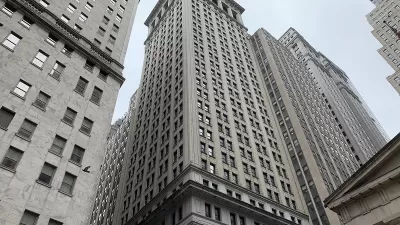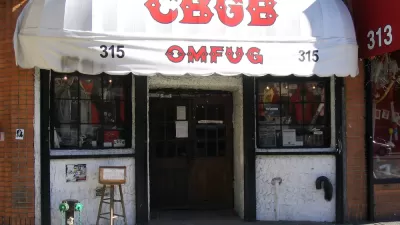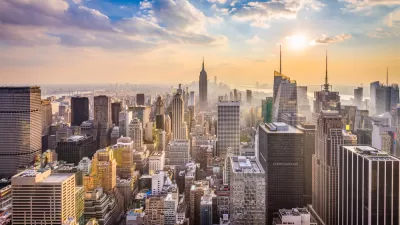With 90 percent of its usual commuters still working from home and a full return to the office highly unlikely, what will become of New York City's towering office buildings?

As companies evaluate the effects of work-from-home policies on their productivity and their bottom lines, there's no doubt that a sizable percentage of remote workers will continue working from home, and many of Manhattan's massive office buildings will "probably never be full again." With companies like Spotify, Twitter, and SalesForce announcing drastic reductions in their in-person operations, writes Matthew Haag in the New York Times, the landscape of Manhattan real estate will change drastically, even after the pandemic is over.
Manhattan is, writes Haag, "an island whose economy has been sustained, from the corner hot dog vendor to Broadway theaters, by more than 1.6 million commuters every day." At the moment, "about 90% of Manhattan office workers are working remotely," with less than half estimated to return to the office by September of this year. "The consequences for New York could be far-reaching, not just for the city’s restaurants, coffee shops and other small businesses, but for municipal finances, which depend heavily on commercial real estate." The loss of daily commuters "has caused the market value of commercial properties that include office buildings to plunge nearly 16 percent during the pandemic, triggering a sharp decline in tax revenue that pays for essential city services, from schools to sanitation."
Others see a light at the end of the tunnel. "The surge in available commercial real estate has actually been a boon for some new businesses that have been able to find spaces at rents that are lower than they were before the pandemic." Brian S. Waterman, executive vice chairman of commercial real estate services firm Newmark, expressed optimism that New York offices would see a "much fuller occupancy" by this fall. Some leading tech companies have also added to their footprint in the city, with Facebook securing 1 million square feet of office space and Apple adding two floors to their Midtown offices. A group of developers and landlords is also calling for the city and state to change zoning rules to allow the adaptive reuse of office buildings into apartments to make more efficient use of the space and alleviate the city's housing shortage.
FULL STORY: Remote Work Is Here to Stay. Manhattan May Never Be the Same.

Study: Maui’s Plan to Convert Vacation Rentals to Long-Term Housing Could Cause Nearly $1 Billion Economic Loss
The plan would reduce visitor accommodation by 25,% resulting in 1,900 jobs lost.

North Texas Transit Leaders Tout Benefits of TOD for Growing Region
At a summit focused on transit-oriented development, policymakers discussed how North Texas’ expanded light rail system can serve as a tool for economic growth.

Why Should We Subsidize Public Transportation?
Many public transit agencies face financial stress due to rising costs, declining fare revenue, and declining subsidies. Transit advocates must provide a strong business case for increasing public transit funding.

How to Make US Trains Faster
Changes to boarding platforms and a switch to electric trains could improve U.S. passenger rail service without the added cost of high-speed rail.

Columbia’s Revitalized ‘Loop’ Is a Hub for Local Entrepreneurs
A focus on small businesses is helping a commercial corridor in Columbia, Missouri thrive.

Invasive Insect Threatens Minnesota’s Ash Forests
The Emerald Ash Borer is a rapidly spreading invasive pest threatening Minnesota’s ash trees, and homeowners are encouraged to plant diverse replacement species, avoid moving ash firewood, and monitor for signs of infestation.
Urban Design for Planners 1: Software Tools
This six-course series explores essential urban design concepts using open source software and equips planners with the tools they need to participate fully in the urban design process.
Planning for Universal Design
Learn the tools for implementing Universal Design in planning regulations.
Ascent Environmental
Borough of Carlisle
Institute for Housing and Urban Development Studies (IHS)
City of Grandview
Harvard GSD Executive Education
Toledo-Lucas County Plan Commissions
Salt Lake City
NYU Wagner Graduate School of Public Service





























